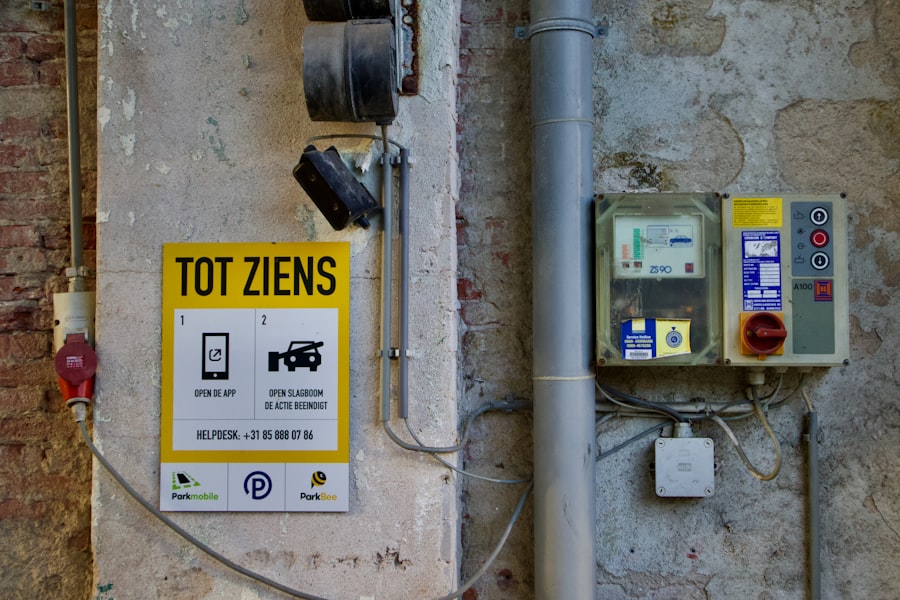Device zoning is a concept that allows you to optimize the functionality and efficiency of your space by dividing it into distinct areas, each tailored to specific needs. This approach is particularly beneficial in environments where multiple activities occur simultaneously, such as homes, offices, or even retail spaces.
It involves strategically placing devices in designated zones to ensure that each area serves its intended purpose without interference from other zones. When you think about device zoning, consider how different areas of your space serve different functions. For instance, in a home, the living room may be designed for relaxation and entertainment, while the kitchen is focused on cooking and meal preparation.
By zoning these areas, you can select devices that cater specifically to the activities that take place there. This not only improves the overall functionality of your space but also enhances the user experience by providing tailored solutions for each zone.
Key Takeaways
- Understanding device zoning is essential for creating efficient and effective automation and control systems in a space.
- Identifying zones in your space helps to determine the specific areas where devices will be grouped and controlled together.
- Selecting devices for each zone requires careful consideration of the functionality and compatibility of the devices within that zone.
- Creating a zoning plan is crucial for organizing and implementing the placement and control of devices in each zone.
- Installing and configuring devices for each zone should be done with attention to detail and accuracy to ensure seamless operation.
Identifying Zones in Your Space
To effectively implement device zoning, the first step is to identify the various zones within your space. This process involves analyzing how you use each area and determining the primary functions that take place there. For example, in a typical home, you might identify zones such as the living room, kitchen, bedroom, and home office.
Each of these areas has distinct requirements and activities associated with them, which will guide your device selection and placement. As you assess your space, consider factors such as traffic flow, natural light, and existing furniture arrangements. These elements can influence how you define your zones.
For instance, if you have an open-concept living area, you might create sub-zones within that space for dining and lounging. By clearly delineating these areas, you can ensure that devices are placed where they will be most effective and accessible. This thoughtful approach to zoning not only enhances functionality but also contributes to a more aesthetically pleasing environment.
Selecting Devices for Each Zone
Once you have identified the zones in your space, the next step is to select the appropriate devices for each area. This selection process should be guided by the specific needs and activities associated with each zone. For example, in a home office zone, you might prioritize devices such as a high-quality printer, ergonomic desk lamp, and reliable computer equipment.
In contrast, the living room zone may benefit from smart speakers, a streaming device, and ambient lighting solutions. When choosing devices, consider factors such as compatibility with existing technology, ease of use, and energy efficiency. You want to ensure that the devices you select not only meet the functional requirements of each zone but also integrate seamlessly into your overall setup.
Additionally, think about how these devices can enhance your experience in each zone. For instance, smart thermostats can help maintain comfortable temperatures in living spaces while energy-efficient appliances can streamline cooking tasks in the kitchen.
Creating a Zoning Plan
| Zoning Plan Metrics | 2019 | 2020 | 2021 |
|---|---|---|---|
| Number of Zoning Applications | 150 | 175 | 200 |
| Percentage of Approved Applications | 80% | 85% | 90% |
| Average Processing Time (days) | 30 | 25 | 20 |
With your zones identified and devices selected, it’s time to create a zoning plan that outlines how everything will come together. This plan should detail the layout of each zone, including the placement of devices and any necessary wiring or connectivity considerations. A well-thought-out zoning plan serves as a roadmap for implementation and helps ensure that all elements work harmoniously together.
As you develop your zoning plan, consider creating visual representations such as diagrams or sketches. These tools can help you visualize how each zone will function and allow you to make adjustments before committing to any installations. Additionally, think about how you can incorporate flexibility into your plan.
As your needs evolve over time, having a zoning plan that allows for easy adjustments will be invaluable in maintaining an efficient and functional space.
Installing and Configuring Devices for Each Zone
Once your zoning plan is in place, it’s time to move on to the installation and configuration of devices for each zone. This step involves physically setting up the devices according to your plan and ensuring they are properly connected to power sources and networks. Depending on the complexity of your setup, this may require professional assistance or can be done as a DIY project.
During installation, pay close attention to the specific requirements of each device. For instance, smart home devices may require specific apps for configuration or integration with other systems. Take the time to follow manufacturer instructions carefully to ensure optimal performance.
Additionally, consider how devices will interact within their respective zones; for example, smart lighting systems may need to be programmed to respond to motion sensors or voice commands for maximum convenience.
Testing and Adjusting Device Zoning

After installation is complete, it’s essential to test each zone to ensure that all devices are functioning as intended. This testing phase allows you to identify any issues or areas for improvement before fully committing to your new setup. Start by checking individual devices within each zone to confirm they are operating correctly and responding as expected.
As you test your device zoning setup, be open to making adjustments based on your observations. You may find that certain devices need repositioning for better performance or that additional devices are required to enhance functionality in specific zones. This iterative process is crucial for fine-tuning your setup and ensuring that it meets your needs effectively.
Integrating Automation and Control Systems
To take your device zoning to the next level, consider integrating automation and control systems that allow you to manage all devices from a central interface. Smart home hubs or control apps can streamline operations across different zones, enabling you to create customized settings based on your preferences. For example, you might set up routines that adjust lighting and temperature automatically when you enter or leave a zone.
Automation not only enhances convenience but also improves energy efficiency by allowing you to monitor usage patterns and adjust settings accordingly. As you explore automation options, look for systems that are compatible with the devices you’ve selected for each zone. This compatibility will ensure seamless integration and provide a cohesive user experience across your entire space.
Monitoring and Managing Device Zoning
Once your device zoning system is up and running, ongoing monitoring and management are essential for maintaining optimal performance. Regularly check device functionality and connectivity to ensure everything operates smoothly. Many smart devices come with monitoring features that allow you to track usage patterns and receive alerts for any issues that may arise.
In addition to monitoring performance, consider how you can manage your device zoning effectively over time. This may involve updating software or firmware for devices, adjusting settings based on changing needs, or even adding new devices as technology evolves. By staying proactive in managing your device zoning setup, you can ensure it continues to meet your requirements efficiently.
Troubleshooting Common Issues
Despite careful planning and execution, you may encounter common issues with your device zoning setup from time to time. These could range from connectivity problems to device malfunctions or even compatibility issues between different technologies. When faced with challenges, it’s important to approach troubleshooting methodically.
Start by identifying the specific issue at hand and consulting user manuals or online resources for guidance on potential solutions. Many manufacturers provide troubleshooting tips that can help resolve common problems quickly. If issues persist, consider reaching out to customer support for assistance or seeking advice from online forums where other users may have encountered similar challenges.
Upgrading and Expanding Device Zoning
As technology continues to advance, there may come a time when you want to upgrade or expand your device zoning setup. This could involve replacing outdated devices with newer models that offer enhanced features or adding additional zones to accommodate changing needs. When considering upgrades or expansions, take stock of your current setup and evaluate what improvements would provide the most value.
Before making any changes, revisit your zoning plan to ensure that new devices will integrate seamlessly into existing zones. Additionally, consider how upgrades may impact automation systems or control interfaces you’ve established. By approaching upgrades thoughtfully, you can enhance your device zoning setup while maintaining its overall functionality.
Best Practices for Maintaining Device Zoning
To ensure long-term success with your device zoning setup, it’s important to adopt best practices for maintenance and management. Regularly review your zoning plan and assess whether it continues to meet your needs effectively. As lifestyles change or technology evolves, being adaptable will help keep your space functional and efficient.
Additionally, prioritize routine maintenance for all devices within each zone. This includes cleaning equipment regularly, checking for software updates, and ensuring proper connectivity between devices. By staying proactive in maintaining your device zoning setup, you’ll create an environment that remains organized and optimized for years to come.
In conclusion, understanding device zoning is essential for creating an efficient and functional space tailored to your needs. By identifying zones within your environment, selecting appropriate devices, creating a comprehensive plan, and implementing automation systems, you can enhance both productivity and comfort in any setting. With ongoing monitoring and maintenance practices in place, you’ll be well-equipped to adapt your device zoning setup as technology advances or personal preferences change over time.
Implementing device zoning can significantly enhance the security and efficiency of a network by segmenting devices into different zones based on their function and security requirements. This approach helps in managing network traffic, improving performance, and reducing the risk of unauthorized access. For a comprehensive guide on how to implement device zoning effectively, you might find the article on com/sample-page/’>Unplugged Psych’s sample page particularly useful.
It provides detailed insights and practical steps to ensure that your network is both secure and optimized for performance.
WATCH THIS! Your Brain Is Not Bored; AI Is Stealing Your Dopamine (76-Minute Documentary)
FAQs
What is device zoning?
Device zoning is the practice of dividing a physical space into different zones or areas where specific devices or equipment are allowed or restricted. This can be used to improve organization, safety, and security within a space.
Why is device zoning important?
Device zoning is important because it helps to ensure that devices are used in appropriate areas, reduces the risk of accidents or misuse, and can improve overall efficiency and productivity within a space.
How can device zoning be implemented?
Device zoning can be implemented by first identifying the different types of devices or equipment that need to be zoned. Then, the space can be divided into zones based on the specific requirements for each type of device. This can be done using physical barriers, signage, or designated areas.
What are the benefits of implementing device zoning?
Implementing device zoning can lead to improved organization, reduced risk of accidents, better control over device usage, and increased overall safety and security within a space. It can also help to streamline workflows and improve productivity.
Are there any best practices for implementing device zoning?
Best practices for implementing device zoning include clearly defining the requirements for each zone, providing clear signage and communication about the zoning rules, regularly reviewing and updating the zoning plan as needed, and providing training and education for those who will be using the zoned areas.




